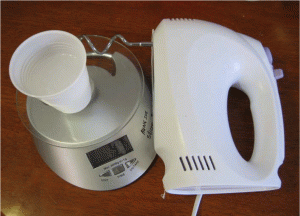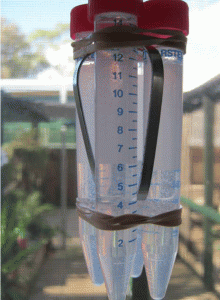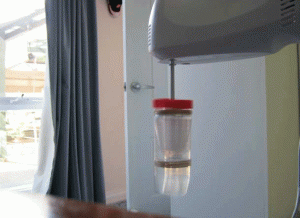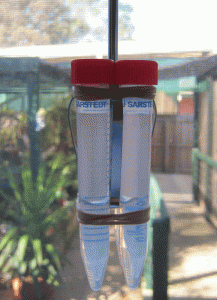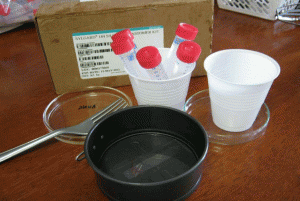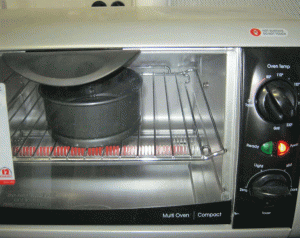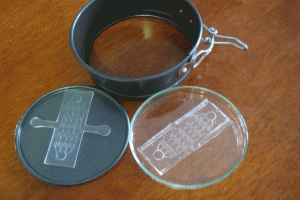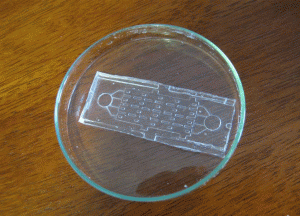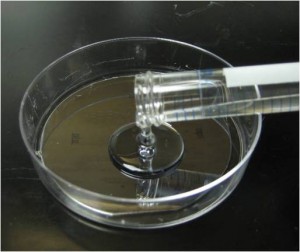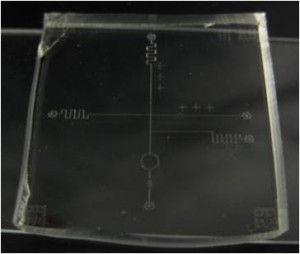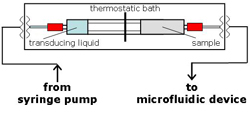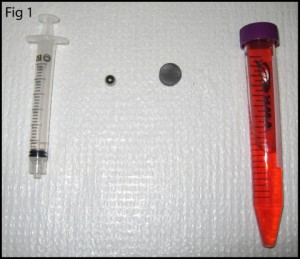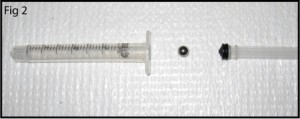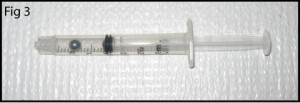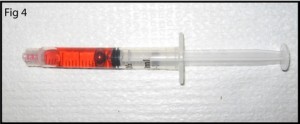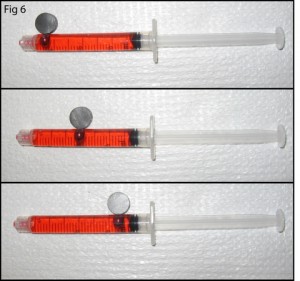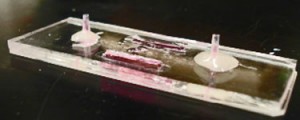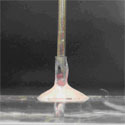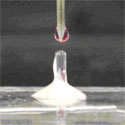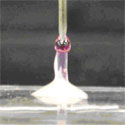R. Rambacha, C. Schecka, V. Skowroneka, L. Schmida and T. Frankea,b,*
aMathematisch-Naturwissenschaftliche Fakultät, Lehrstuhl für Experimentalphysik I, Soft matter and Biological physics, Universität Augsburg, Germany
b Department of Physics and School of Engineering and Applied Science, Harvard University, USA.
*E-mail: tfranke[at]seas.harvard.edu; Thomas.Franke[at]physik.uni-augsburg.de
Why is this useful?
Microfluidic PDMS-chips are widely used in many labs. Recently, the use of acoustics in combination with PDMS devices has attracted much attention in the field because it is simple to use and allows for unique control of minute amounts of fluid, cells and particles on a microfluidic chip. This trend is also reflected by a series of tutorial papers1 and front covers2,3 in Lab on a Chip that are dedicated to this topic.
The core component of these chips is a versatile interdigital transducer (IDT), consisting of a pair of interlocked electrodes on a piezoelectric substrate. It can be tailored to meet the demands of a specific application, e.g. on microfluidic chips the IDT is often used as an acoustic pump. The overall shape of the electrode arrangement determines the fluid actuating sound-path on the chip and makes the difference between specific IDTs. For better aligning the IDT with other fluidic components, such as a PDMS channel, testing the functionality of an IDT and probing completely new IDT-designs, it is often necessary to visualize IDT’s acoustic path or the focal point of a focused IDT. However this visualization still remains elusive and requires expensive equipment such an AFM, SEM or a vibrometer. These methods are not available in every lab and very time-consuming. We show a simple and quick way to visualize the IDT’s sound path. The only components needed are isopropanol and a microscope, which are both available in almost every microfluidic lab.
What do I need?
- Sample microfluidic chip with IDT and frequency generator
- Isopropanol
- Microscope
What do I do?
1. Place the chip with the IDT on the microscope.
2. Put a few drops of isopropanol onto the chip to wet its surface.
3. Turn on the IDT and observe with microscope.
4. Then, knowing the position of the acoustic wave path, place the PDMS onto the chip.
5. Because there is still alcohol on the chip, firm bonding of the plasma treated PDMS to the chip is delayed and there is still some time (10min or so) to align the PDMS precisely under the microscope. When the alcohol has evaporated the PDMS eventually bonds firmly to the chip and is ready to use.

Covering the chip with an isopropanol film before turning on the IDT.

Optical micrograph of the chip with a straight IDT. An interference pattern of the SAW can be seen.

Focused tapered IDT excited with two different frequencies (left: 120MHz, right: 240MHz). The acoustic path shifts with higher frequency towards the center of the IDT.

Two opposed tapered IDTs at (from top to down) 161MHz, 163MHz and 165MHz.

Visualization of a focused tapered IDT’s acoustic paths at 90MHz.

Demonstrating the visualization of the focused IDT’s acoustic path. Depending on the material’s anisotropy the focal point is shifted towards or away from the IDT.
What else should I know?
- With other fluids such as water, glycerin and ethanol, the visualization effect was less pronounced. The effect was most evident with isopropanol.
- By knowing the applied frequency and the distance between the electrodes of the tapered IDT at the excited spot (it is equal to the wavelength), this is also a very simple and quick method to calculate the material’s surface speed of sound with an error below 5%.
- One can determine the material’s anisotropy by measuring the difference between experimental and geometrical distance of the focal points of a focused IDT4.
References
[1] H. Bruus, J. Dual, J. Hawkes, M. Hill, T. Laurell, J. Nilsson, S. Radel, S. Sadhal and M. Wiklund. Lab on a Chip, 2011, 11, 3579
[2] J. Shi, S. Yazdi, S. Lin, X. Ding, I. Chiang, K. Sharp and T. Huang. Lab on a Chip, 2011, 11, 2319
[3] L. Schmid and T. Franke. Lab on a Chip, 2013, 13, 1691
[4] J.B. Gree, G.S. Kino and B.T. Khuri-Yakub. IEEE 1980 Ultrasonnics Symposium, 69





















